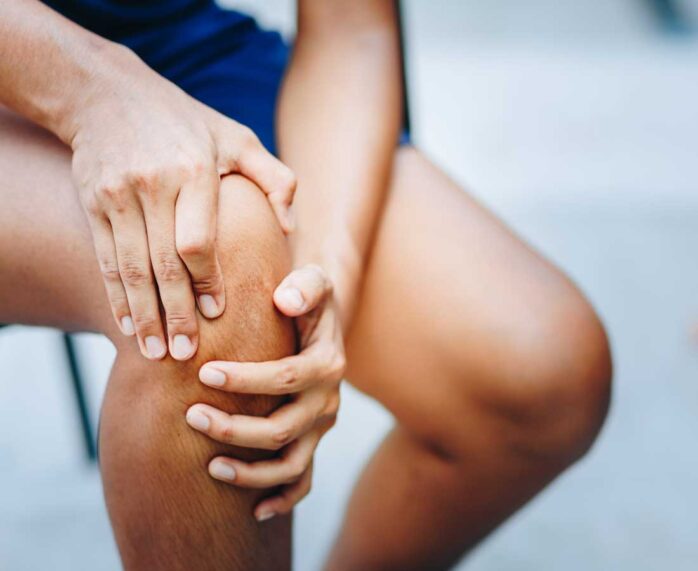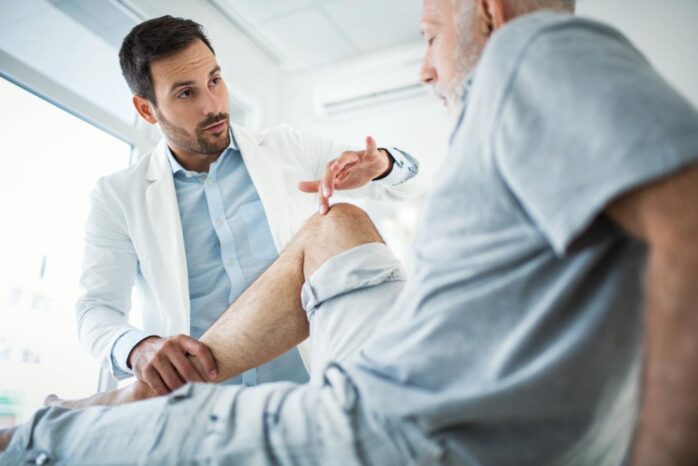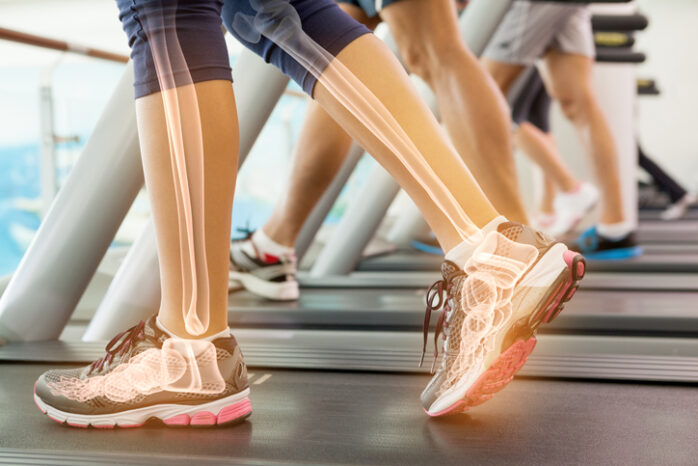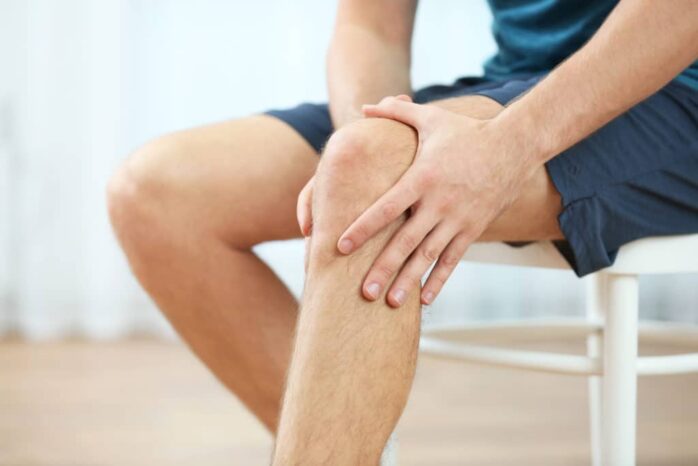
The health of our joints relies heavily on the proper form of exercise. Joints are large, complex structures susceptible to injury when muscles and ligaments do not properly support them, so it’s important to maintain them to reduce the risk of injury. Performing exercises to strengthen the muscles in your body will help promote better joint health, especially when done regularly. It doesn’t sound very easy, but it is quite simple. Here are five best practices to maintain joint health.
1. Perform a comprehensive warm-up

A comprehensive warm-up can significantly help with joint health. A proper warm-up will prepare your body for strenuous activity by increasing the temperature of muscles, tendons, and other tissues. While increasing your body temperature may not seem like a big deal, it is directly related to preventing injuries. The higher the temperature your tissues reach, the more elastic they become.
To prevent injuries, you must warm-up before exercising. A good way to do this is by doing some light cardiovascular activity like a brisk walk or jog and then stretching your muscles out for 10 minutes. This will help increase blood flow, which in turn increases the amount of oxygen going into your body’s cells, making them more energized and ready for exercise.
2. Perform dynamic stretching

Stretching is an integral part of any exercise routine. It is necessary to keep muscles flexible and move easily to avoid injuries. Stretching should be performed after a warm-up, but don’t overdo it. Beginners will want to perform static stretches, which are held for a few seconds at maximum length followed by a rest period of 10 seconds. Advanced athletes may benefit from using dynamic stretches before exercising, which involve moving through the range of motion of a given exercise. Dynamic stretches include:
- Leg swings will prevent muscle tightness and ease the tight muscles in your groin, hips, and inner thighs.
- Quadricep stretches will help prevent knee injuries because they will stretch the muscles and ligaments on your knees.
- Calf stretches will help to improve ankle flexibility and Achilles tendon mobility.
- Buttock stretches will help to improve hip mobility.
- Hip flexor stretches will provide relief of low back pain because it helps with lower back mobility.
- Chest stretching helps improve the flexibility of the pectoralis muscle.
- Upper back extensions help with upper back mobility, preventing neck pain.
3. Train your core

While it is not the sexiest thing in the world to work on a strong core, it is an absolute necessity if you want to maintain joint health. The muscles in your midsection are called your core, and they can help keep your entire body stable by supporting your spine and pelvis. They also connect to all of your extremities—your hips, shoulders, and neck—so they play a significant role in stabilizing them as well. One way to maintain proper core strength is by performing sit-ups and crunches. After completing your regular warm-up and stretching routine, you should immediately begin working on core strength with a few sets of 10 reps of these exercises. To train your abs, you can place your hands on the floor under your knees and lift them in an arc motion against the force of gravity and then lower them back down slowly to the starting position. Repeat this 11 times before returning to your regular workout.
4. Keep your body hydrated

Having a healthy body requires a healthy diet and plenty of rest. But this isn’t always possible, which is why you should still drink plenty of water throughout the day. Before and during exercise, you should drink at least 1 bottle (16 ounces) of water every hour to replenish the fluids that your body loses. This will help prevent ;
Muscle Cramps
This is caused by dehydration, leading to decreased blood flow and oxygen to the muscles. Muscle cramps can be caused by several factors, including muscle fatigue, dehydration, or low magnesium levels. Eating magnesium-rich foods like nuts or sesame seeds can help prevent this condition by increasing your body’s magnesium levels.
Joint Stiffness
When you are dehydrated, your body tends to produce excess acid that, in turn, increases the amount of water in your joints. This causes your joints to swell and become stiff, making it difficult and painful to move.
Headaches
When you don’t drink enough water and get dehydrated, it is not uncommon for headaches due to the decreased blood flow throughout your body.
Muscle Fatigue
Muscle fatigue is also caused by dehydration. When you are dehydrated, your body lacks the necessary fluids to circulate oxygen throughout your body effectively. It will then slow down your movements to preserve the remaining fluids in your body. This can sometimes make it difficult to complete exercises and harder to recover if you don’t replenish lost fluids.
Heart Problems
Heart problems result from dehydration because when you are dehydrated, it becomes harder for your heart to pump blood through your vessels and therefore harder for it to pump blood throughout your body. You may also experience a racing heartbeat or irregular heartbeats.
Metabolic Dehydration
This occurs when you don’t drink enough fluids to maintain a healthy metabolism. As a result, your body’s metabolism will slow down, making it very hard to burn calories and lose weight. Your body will also produce excess acid because it needs more water to function properly. This, in turn, can cause some serious health problems such as kidney stones and even kidney failure. So remember that you should drink at least 3-5 bottles of water per day!
5. Use Proper Form During Exercise

Proper form is extremely important in any exercise. Improper form can lead to injuries and improper contraction of muscles, which can lead to imbalances within the body. Before beginning any exercise, it’s important that you perform a thorough warm-up and then perform a few sets with light weights or without any weights at all. This will prepare your muscles to be pushed to the limit without having to strain.
What are the benefits of a good warm-up?
- It will allow your body to become more responsive and elastic, improving the coordination of your muscles. Your muscle tone will increase, which is important for any exercise routine. You also have a better chance at completing every rep of an exercise by warming up properly with light weights or jumping jacks.
- It increases blood flow throughout your body, and it allows your heart rate to rise so that you can get a better sense of your physical endurance level. So, if you are a beginner and are unsure if you’re ready for higher intensity exercises or not, do a light warm-up to see how your body reacts.
- It will help prevent muscle stiffness and prevent injury—including injuries caused by improper form.
To ensure proper joint health, you need to maintain muscle function and flexibility. These five best practices will help you remain active and mobile for years to come by keeping your joints properly supported by muscles, tendons, and ligaments. Though if you damage your joints from careless lifting or are having persistent joint pain we do recommend you visit an orthopedic surgeon, a great one to visit would be Dr. Bryan Gruber at Integrated Orthopedics who is a leading physician in the field.
But take care of yourself so you can enjoy a more pain free life well into your golden years.






